Son Tay Ancient Citadel

Son Tay Ancient Citadel is a unique military structure made entirely of laterite. After more than 200 years of ups and downs, it still preserves many historical traces and retains its solemn, majestic appearance, reflecting the power and glory of a heroic era in Vietnam’s history.
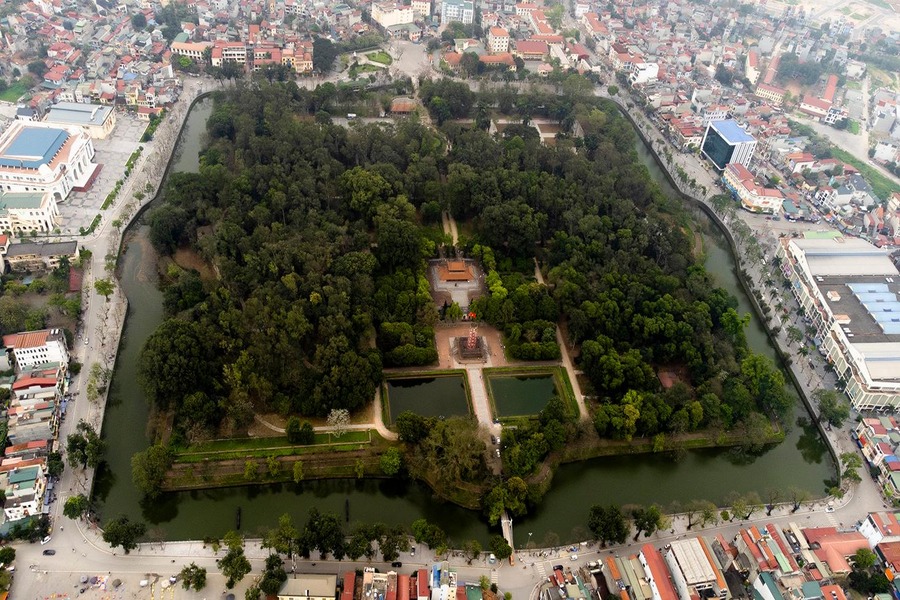
Aerial view of the Son Tay Ancient Citadel. Photo: Dan Viet
The citadel has now made way for modern development, becoming a historical site and a scenic spot in Son Tay Town. Join Asia King Travel as we explore this landmark through the article below.
During the feudal era, Son Tay was considered a vital garrison, guarding the western gateway of Hanoi as well as serving as a rear base to protect the northern mountainous frontier. In 1832, Emperor Minh Mang ordered the construction of Son Tay Citadel following the Vauban architectural style. Upon completion, the citadel had an outer perimeter of 1,300 meters, walls 4.4 meters high, surrounded by a moat and four gates facing in four directions.
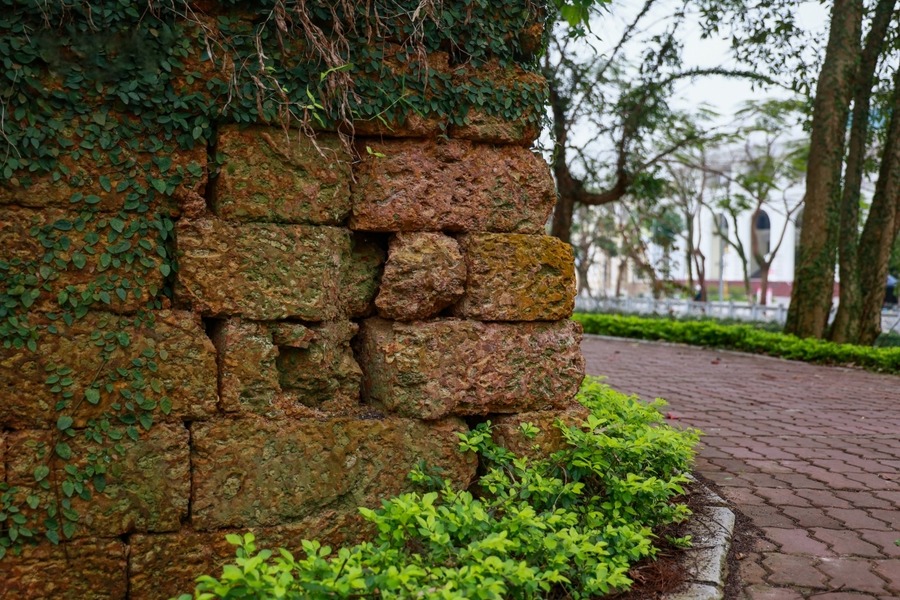
The citadel walls are built from laterite stones tightly fitted together. Photo: VOV
During the 1870s and 1880s, the citadel served as a key defensive stronghold for the Nguyen Dynasty in their resistance against the French, between the First (1872) and Second (1883) Tonkin Campaigns. It fell into French hands on December 16, 1883. In 1994, Son Tay Ancient Citadel was recognized as a historical and architectural relic.
The ancient citadel is now located in the center of Son Tay Town, on the outskirts of Hanoi. From the city center, it’s about a 35-kilometer journey along National Highway 32. You can start your trip from Cau Giay Street or the Mai Dich intersection. Even more conveniently, Nhon Station on the Nhon – Hanoi Station metro line can help shorten your travel distance a bit.
You just need to follow National Highway 32 for about 40 kilometers to reach Son Tay Town. The ancient citadel is located right along the highway, on Nguyen Thai Hoc Street. On the way, you can stop by Phung Town to try the famous Phung pork skin rolls.
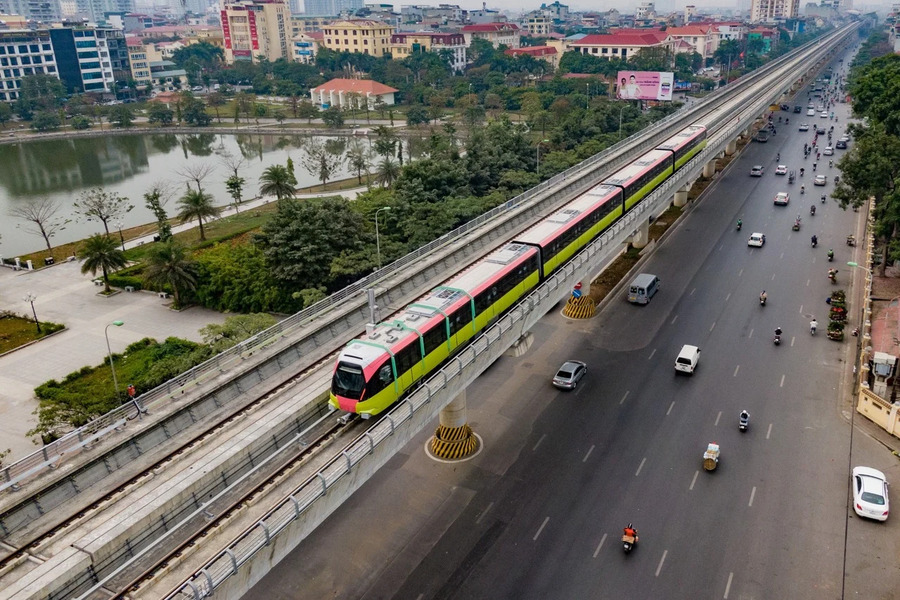
The metro is a unique transportation option on the way to Son Tay Ancient Citadel. Photo: VOV
You should plan your visit during the summer months, from April to August, when you can truly feel the refreshing coolness of the lush green trees that shade the entire citadel and surrounding moat, even on the hottest days. The atmosphere on the outskirts of Hanoi is also noticeably more peaceful and pleasant than that of the city center. With its green, tree-covered space, Son Tay Ancient Citadel is an ideal spot for picnics and outdoor activities.
Suggested for you: Ha Noi Tour 1 day: Duong Lam Ancient Village
Today, the ancient citadel serves as both a historical site and a public park. Strolling along the path surrounding the old walls, you can leisurely enjoy the sound of birds singing from the trees above.
Notably, parts of the walls display a reddish-brown hue of laterite stone, while other sections are covered with wild plants. Both of the old citadel gates are now covered by ancient banyan trees. Although located right in the middle of town, stepping inside feels like entering a peaceful world completely removed from the bustling streets outside.
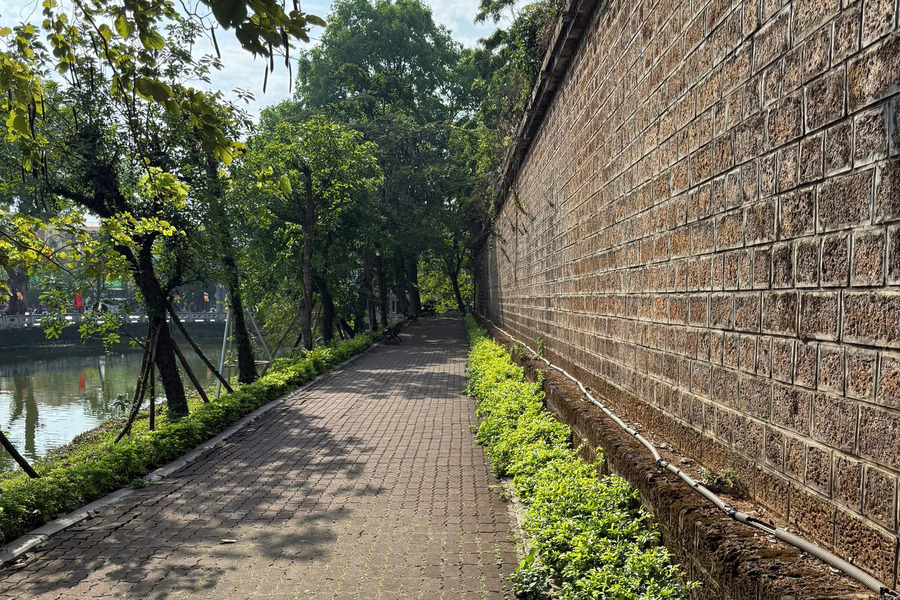
The walking path surrounding the citadel walls. Photo: Nguyen Tu Nam
Entering from the southern gate, you’ll immediately see the red flagpole at the center of the citadel. Standing 18 meters tall, the flagpole is built in the style of the Hanoi Flag Tower, with a broad base below and a tapered shaft rising above. In front of the flagpole is a spacious courtyard, a popular spot for visitors to relax, play, or take photos. The flagpole is considered a symbol of the citadel.
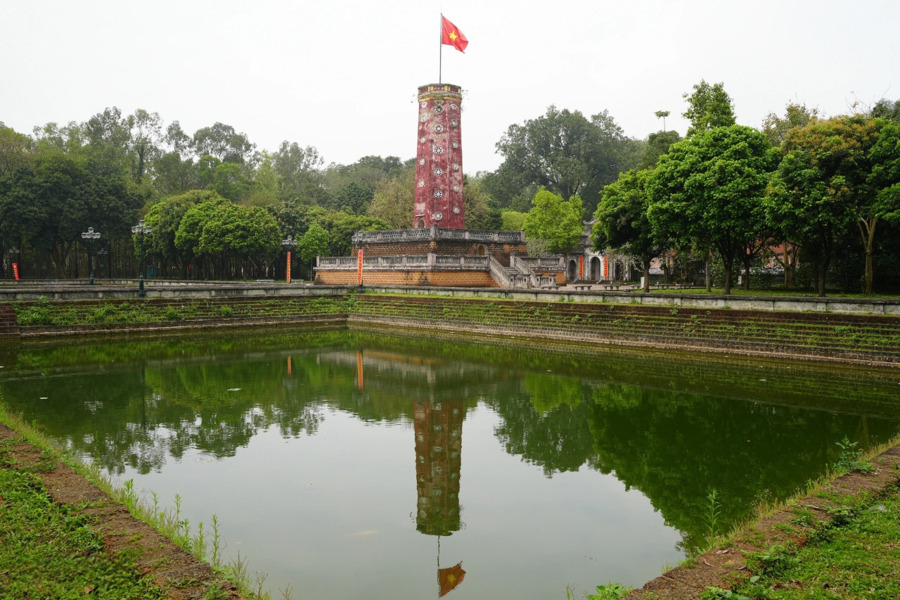
In front of the flagpole is a large courtyard with two ponds on either side. Photo: Dan tri
Continuing past the flagpole, you'll reach Kinh Thien Palace, which once served as the workplace of mandarins and the resting place for the king during his visits to Son Tay. In 1946, the government of the Democratic Republic of Vietnam held a meeting here to decide on important national matters.
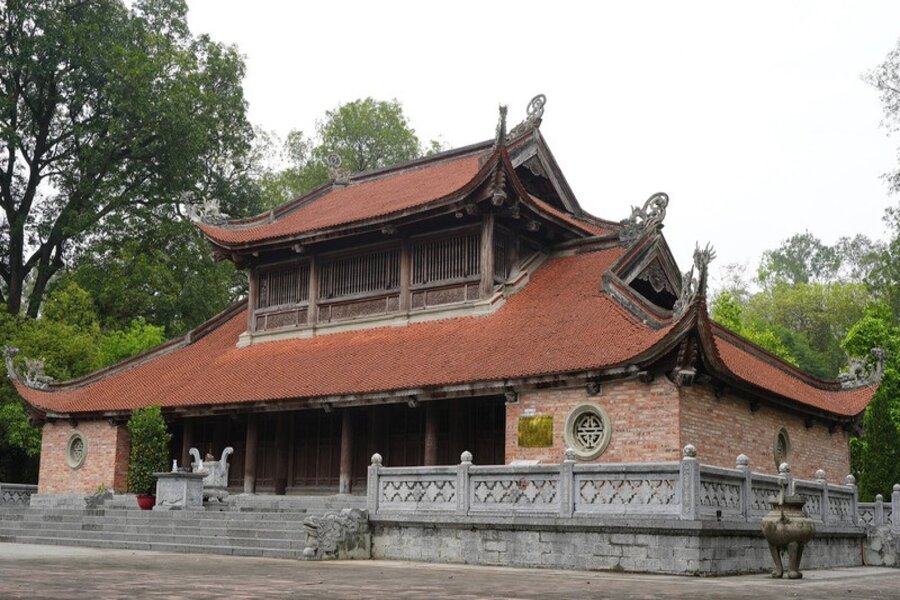
Kinh Thien Hall inside the citadel. Photo: MIA
Inside the ancient citadel, several notable historical relics remain. On the western side stands the old citadel gate, flanked by two cannons. In addition, there is an exhibition area displaying two MiG-21 fighter jets from the Red Star Regiment and one Mi-8 helicopter from Regiment 916. They are wartime artifacts preserved after the Vietnam War, which enhance the cultural and visual value of the heritage site.
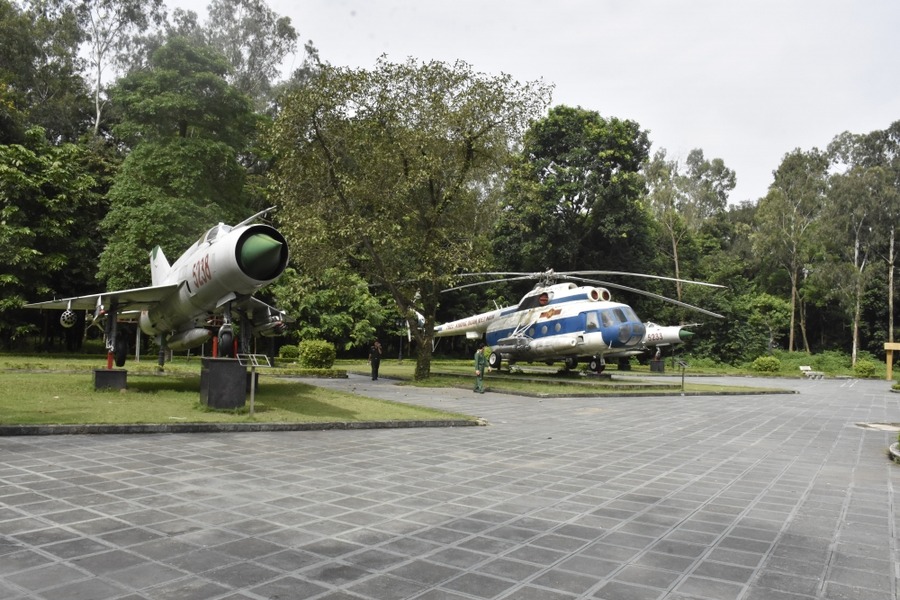
The aircraft display area is located at the gate opposite the entrance to the flagpole. Photo: Lao dong
Every Saturday evening, the western streets surrounding the citadel transform into a lively walking street that attracts many visitors. A variety of cultural and entertainment activities are held, covering diverse themes suitable for all ages. Local product stalls offer a wide range of delicious and unique specialties. You can also join in traditional Vietnamese folk games such as sculpting to he (toy figurines), calligraphy writing, portrait sketching, and bamboo pole dancing.

The walking street is always lively and bustling with fun activities. Photo: Kinh te do thi
Son Tay Ancient Citadel is a perfect getaway from the hustle and bustle of the city, just a short trip from Hanoi. Its countryside charm and timeless beauty are sure to leave a lasting impression. Contact Asia King Travel today to discover all the hidden gems and iconic landmarks of the capital.
Suggested for you: Ha Noi Trip 1-day: Discovery of Hanoi by motorbike